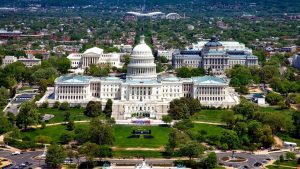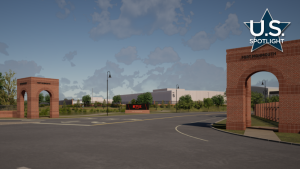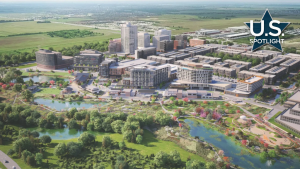You might say things were falling through the cracks.
That has been the situation with the four-decades-old, and quite unique, Victoria Park Plaza Bridge over Interstate 696 in Oak Park, a Detroit suburb.
In winter the freeze-thaw cycle has resulted in water meandering through the joints in between the original concrete box girders and hanging from the tunnel roof, posing a danger to motorists, though there have been no incidents. But $300,000 a year is spent on maintenance.
Now the Michigan Department of Transportation (MDOT) plans to fix the problem with an entire bridge replacement beginning in 2015.
But first a little about the bridge or overpass itself.
The 700-foot-wide-by-180-foot-long bridge was designed as both a roadway and a park to keep a metro Detroit Orthodox Jewish community intact.
The area, and neighboring suburbs of Southfield and Huntingwood Woods, have among the highest number of Jewish households in the region. Accordingly, there are centrally located places of worship, religious schools, kosher shopping, bakeries and other Jewish venues.
When I-696, named for famed auto union leader Walter P. Reuther, was completed in the late 1980s, its route had been planned through the heart of Oak Park. It is a six-lane crosstown expressway that bisects metro Detroit’s northern suburbs east to west.
Since Jewish law prevents work and driving on the Sabbath and holy days most transportation is by foot. The MDOT constructed the overpass to ensure “the community remains connected to their centers of worship, community and education.”
MDOT bridge engineer Aaron Mattson said he can’t recall a similar overpass in the United States except perhaps one in Phoenix, Ariz.But the bridge, and two smaller neighboring ones, were cited as an influence for construction of Windsor’s 11 kilometer Herb Gray Parkway, completed in 2015 and which will connect the Gordie Howe International Bridge, expected to open in late 2024, to Highway 401. The parkway has a series of elongated overpasses that carry streets and walking-cycling trails in a natural landscape.
Mattson said the original design featured 170 four-foot-wide concrete box beams separated by an inch-and-a-half of joint filler. On top was a concrete deck and then four feet of soil.
Nothing was particularly different about the construction.
“Ultimately the size of these beams is not much greater than what you’d anticipate for that sort of loading in that area,” he said.
The soil and its weight also “didn’t contribute” to the problem.
The smaller neighboring bridges were unaffected.
The MDOT is still in the redesign process but the entire superstructure – the beam, deck and soil – will have to be replaced, along with “some adjustments” to the abutments and central solid concrete pier dividing the east and west lanes.
The box beams will be removed. In their place will be placed prestressed Bulb Tee I-shaped beams.
“It’s more cost effective to go back with concrete beams than steel,” Mattson said. “These will not be spaced or adjacent to what you see right now. These will be separated by approximately six feet. So, you’re not going to see the phenomenon with the icicles forming (between the former beans).”
A six-to-nine-inch concrete deck will be laid on top and then the soil.
Amenities could include new sidewalks and pavilions.
“There’s some moving parts here,” in the design stage, he said.
The MDOT estimates construction will begin in early 2025 with a price tag of $43 million.
The work is being paid through U.S. President Joe Biden’s Reconnecting Communities Program, aimed to “reconnect neighborhoods by removing, retrofitting, or mitigating transportation barriers, such as highways and railroad tracks.”











Recent Comments
comments for this post are closed